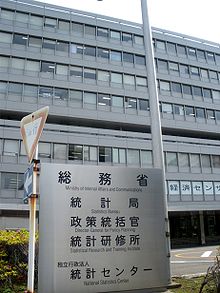
The Statistics Bureau of Japan or SB/SBJ (統計局, Tōkeikyoku) is the statistical agency of Japan, subordinate to the Ministry of Internal Affairs and Communications.
Its headquarters is in the ministry's Second Government Office (第2庁舎), in Wakamatsu-cho, Shinjuku, Tokyo.[1]